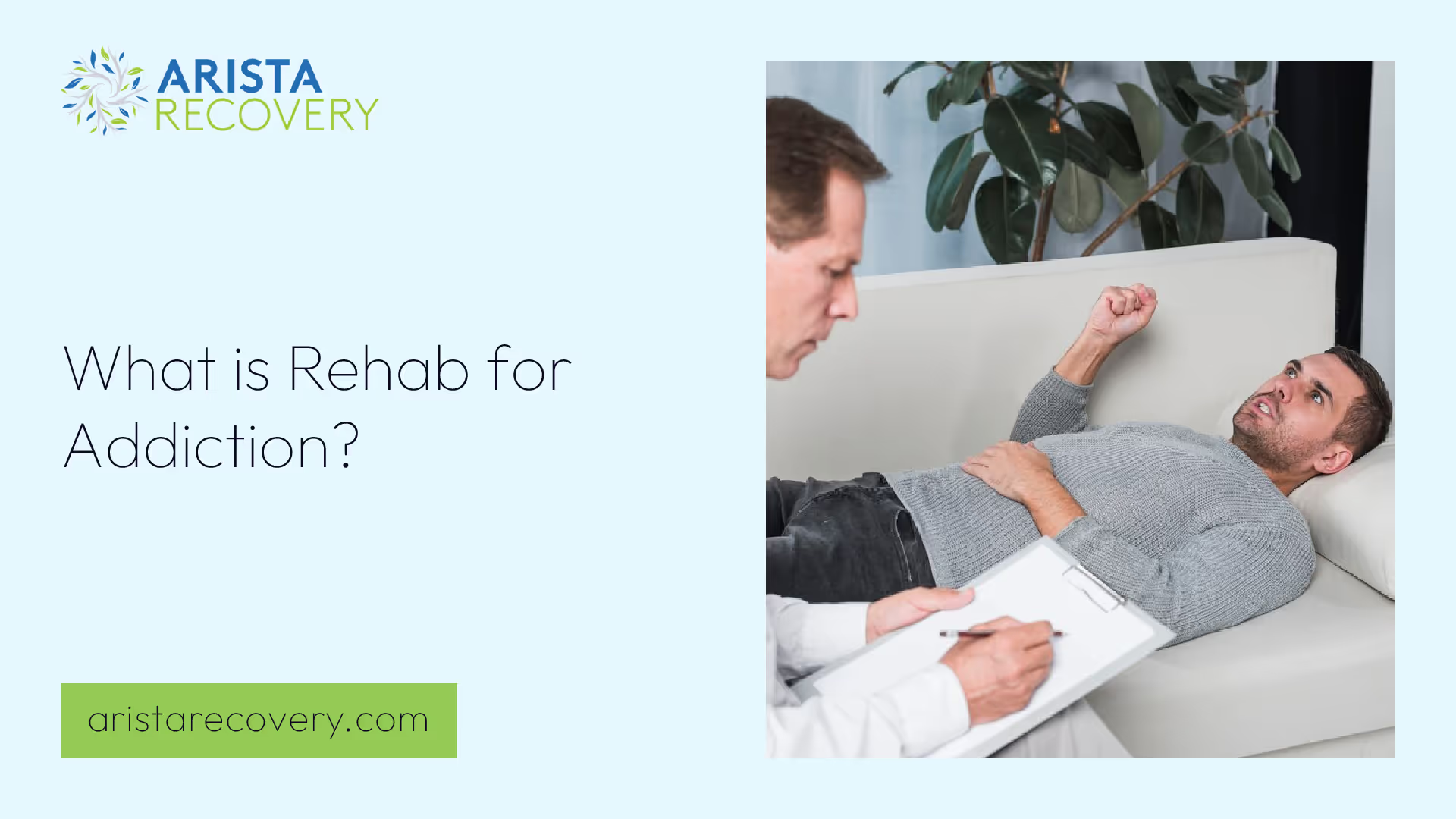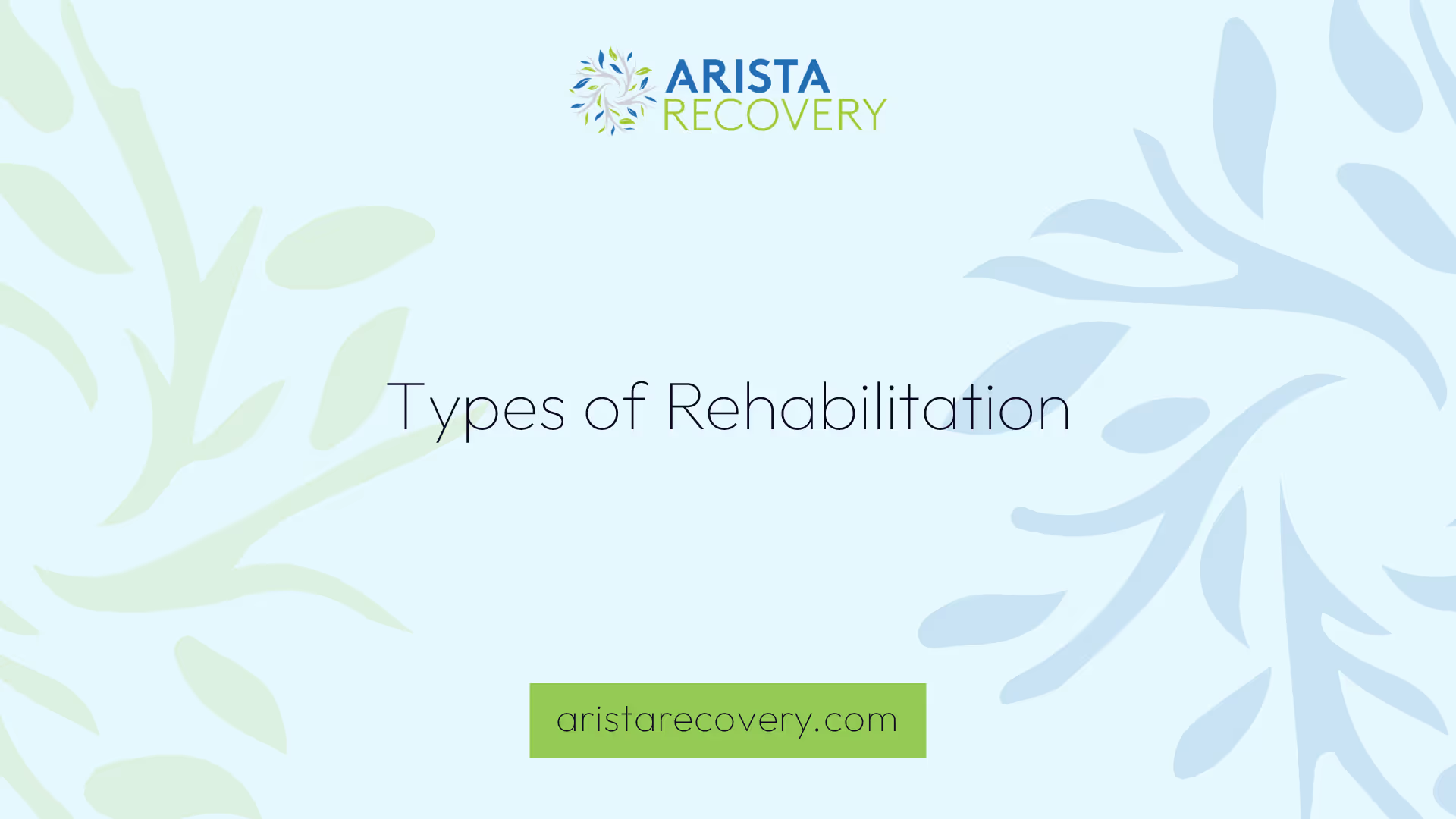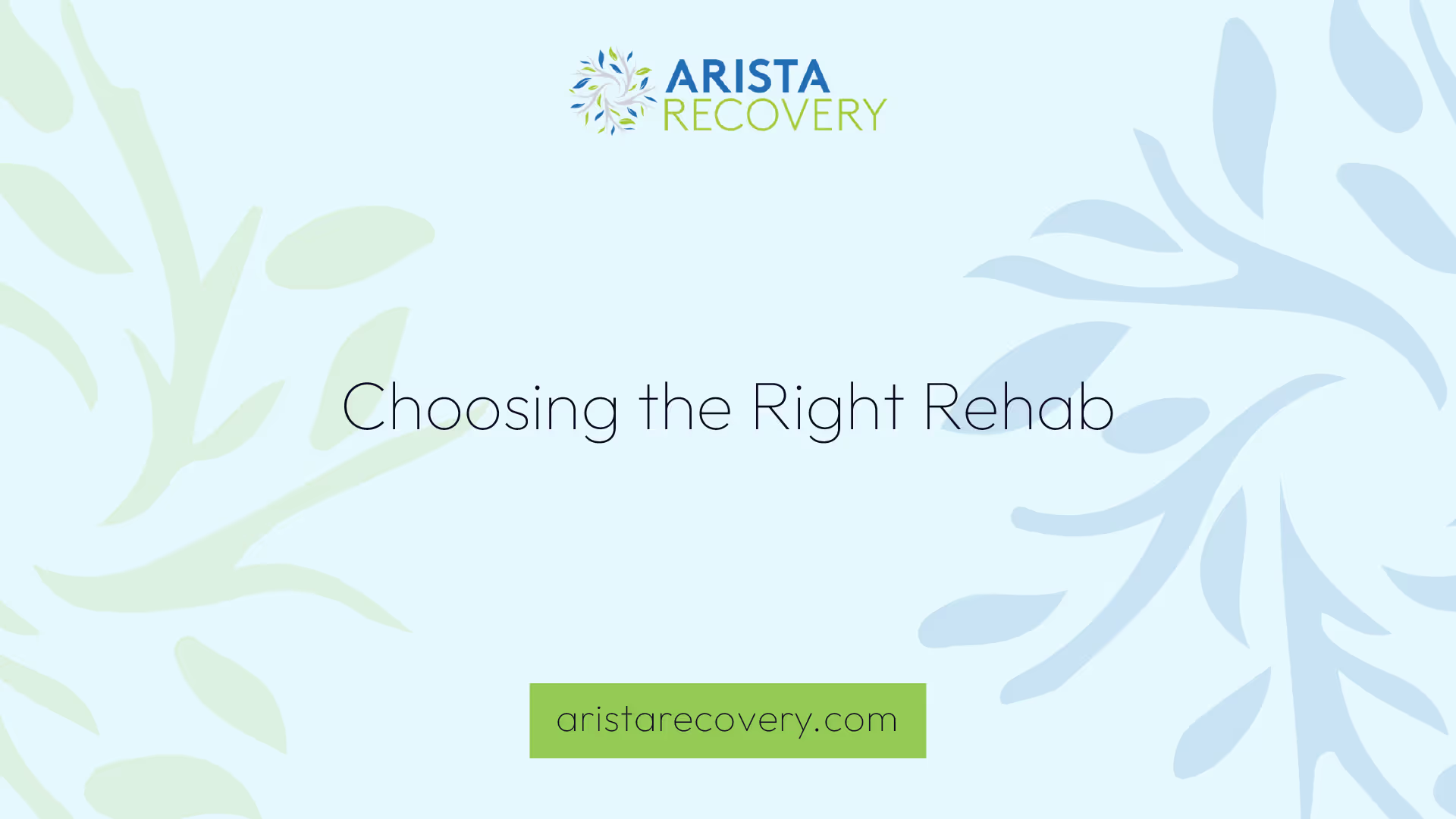What is Rehab for Addiction?


Understanding Rehabilitation
Exploring the question, "what is rehab?", it's essential to delve into the definition and goals of rehabilitation, especially in the context of addiction disorder.
Definition of Rehabilitation
Rehabilitation is a term that dates back to the 15th century [1]. Today, the World Health Organization (WHO) defines rehabilitation as “a set of interventions designed to optimize functioning and reduce disability in individuals with health conditions in interaction with their environment.” This process helps individuals to be as independent as possible in everyday activities and enables participation in education, work, recreation, and meaningful life roles.
In the context of addiction, rehabilitation is a structured program designed to help individuals overcome their dependence on substances and regain control over their lives. This is achieved through a combination of medical, psychological, and social interventions, tailored to meet the unique needs of each individual. For more details on what rehab is like, you can refer to our article on what is rehab like?.
Goals of Rehabilitation
The primary goal of rehabilitation is to help individuals regain essential functions to improve their quality of life. Whether recovering from a traumatic injury, dealing with a chronic health condition, or struggling with addiction, rehabilitation offers a path towards recovery and independence.
Specifically, for individuals dealing with addiction, the goals of rehabilitation can include overcoming physical dependence on substances, learning coping strategies to manage cravings and avoid relapses, improving mental health, and restoring relationships damaged by addiction.
Rehabilitation is an important part of universal health coverage and is a key strategy for achieving Sustainable Development Goal 3 – “Ensure healthy lives and promote well-being for all at all ages”. It's also an investment with cost benefits for both individuals and society, as it can help avoid costly hospitalization, reduce hospital length of stay, prevent re-admissions, enable individuals to engage in work or remain independent at home, and minimize the need for financial or caregiver support.
Different types of rehabilitation are available to aid in the recovery process, catering to various needs and conditions. Exploring these types can help individuals or their loved ones make an informed decision when choosing a rehab near me.
Importance of Rehabilitation
Understanding the concept of rehabilitation is vital for those seeking to overcome addiction. However, an equally important question is 'why is rehab important?' This section will explore the impact of rehabilitation and the global need for these services.
Impact of Rehabilitation
Rehabilitation is more than just a treatment method; it's an investment with cost benefits for both individuals and society. According to the World Health Organization (WHO), rehabilitation can help avoid costly hospitalization, reduce hospital length of stay, and prevent re-admissions. It enables individuals to engage in work or remain independent at home, thereby minimizing the need for financial or caregiver support. If you want to know more about what the journey through rehab is like, visit our article on what is rehab like?.
Furthermore, rehabilitation is an integral part of universal health coverage and plays a key role in achieving Sustainable Development Goal 3 – “Ensure healthy lives and promote well-being for all at all ages”. This highlights the importance of rehab not just for individuals, but also for the overall health and well-being of communities and societies.
Global Rehabilitation Needs
Despite the significant benefits of rehabilitation, there is a considerable unmet need for these services globally. The WHO reports that more than half of people living in some low- and middle-income countries who require rehabilitation services do not receive them. This gap in service availability indicates a significant need for increased accessibility and provision of rehabilitation services worldwide.
Globally, it's estimated that about 2.4 billion people are currently living with a health condition that may benefit from rehabilitation. This need is expected to rise in the coming years due to changes in global health trends and population characteristics.
Moreover, emergencies due to natural or human-induced hazards can generate overwhelming rehabilitation needs. Rehabilitation in these instances is crucial but often overlooked in health system preparedness and early response, leading to increased impairment and disability risks.
While these statistics are global, they underscore the importance of accessible and comprehensive rehabilitation services, including those for addiction. If you're seeking to overcome addiction and are looking for a rehab facility in Kansas, visit our guide on choosing a rehab near me. Remember, rehab can be a vital step on the path to recovery, providing the tools and support needed to regain control over one's life.

Types of Rehabilitation
In the context of addiction recovery, rehabilitation often encompasses a broad spectrum of therapies. These therapies are aimed at helping individuals regain their physical, cognitive, and emotional health. Here's a brief overview of some common types of rehabilitation: physical therapy, occupational therapy, speech and language therapy, and cognitive rehabilitation therapy.
Physical Therapy
Physical therapy is a type of rehabilitation that focuses on pain relief and movement improvement. This therapy is often used to assist in recovery from sports-related injuries, manage chronic diseases like heart disease or arthritis, or provide rehabilitation following a stroke, injury, or surgery.
In the context of addiction recovery, physical therapy can help individuals regain physical strength and health that may have been compromised due to substance abuse. It also plays a critical role in managing and reducing physical pain, which can be a significant factor in substance use disorders.
Occupational Therapy
Occupational therapy is another form of rehabilitation that focuses on enhancing a patient's ability to perform daily tasks. These tasks could range from self-care practices like eating and dressing to work or school activities. The goal of occupational therapy is to assist patients in regaining independence, particularly those grappling with injuries, disabilities, or illnesses.
Within addiction recovery, occupational therapy can play a vital role in helping individuals relearn necessary skills for their daily life and work, often compromised due to their addiction.
Speech and Language Therapy
Speech and language therapy addresses issues related to speech, language, swallowing, and voice. This therapy can benefit individuals across all ages, from newborns with conditions like cerebral palsy to adults with conditions like stroke or Parkinson’s disease.
In the scope of addiction recovery, speech and language therapy can help individuals who have suffered cognitive or neurological damage due to substance abuse. It's also beneficial in improving communication skills, crucial for expressing emotions and needs during the recovery process.
Cognitive Rehabilitation Therapy
Cognitive rehabilitation therapy is aimed at improving cognitive abilities, such as memory, attention, and problem-solving skills. It's particularly beneficial for individuals who've experienced a brain injury or cognitive impairment due to various reasons [4].
When applied to addiction recovery, cognitive rehabilitation can support individuals in rebuilding cognitive functions impacted by their substance use. This therapy can assist in developing new skills or strategies to compensate for any cognitive deficits, thereby aiding in the overall recovery process.
Understanding these different types of rehabilitation can help you make an informed decision when seeking treatment for addiction. For more information on what to expect during rehab, visit our article on what is rehab like?. And, if you're ready to take the next step, our guide on choosing a rehab near me can assist you in finding a suitable treatment facility in Kansas.
Rehab Programs
Rehab programs form an integral part of the journey from addiction to recovery. These programs provide structured treatment plans designed to combat addiction and help individuals lead a healthier life. There are two main types of rehab programs: inpatient and outpatient.
Inpatient Rehabilitation
Inpatient rehab programs require individuals to live at the facility for the duration of treatment. The length of stay can vary from weeks to months or even longer, depending on the severity of the addiction and any co-occurring mental health disorders.
This type of program includes medically managed detox followed by a comprehensive treatment program with addiction specialists and evidence-based therapeutic interventions. These interventions could range from individual therapy and group counseling to holistic therapies and educational workshops.
Inpatient rehab provides a structured environment that eliminates distractions and potential triggers, allowing individuals to focus solely on their recovery. It's ideal for those who require 24/7 care and support [5].
Outpatient Rehabilitation
On the other hand, outpatient rehab allows individuals to live at home or in a sober living environment while participating in therapies and counseling sessions. This flexibility enables them to maintain their work, school, or home responsibilities during treatment.
Outpatient rehab offers several levels of care, including intensive outpatient programs (IOPs), partial hospitalization programs (PHPs), and traditional outpatient programs. Each of these provides different hours of structured programming each week, allowing individuals to choose a program that best fits their schedule and needs [5].
Inpatient vs. Outpatient Rehab
The primary difference between inpatient and outpatient rehab is the living arrangement during treatment. Inpatient care requires residing at the facility, while outpatient programs provide treatment at the facility but allow individuals to return home at the end of each day.
Other differences include the intensity of care and the flexibility to maintain daily responsibilities during treatment. The choice between inpatient and outpatient rehab should be made after consulting with a healthcare provider or addiction treatment specialist. This consultation will determine the appropriate level of care based on a thorough clinical assessment [5].
To learn more about what rehab is like and how to choose the right rehab program, check out our articles on what is rehab like? and choosing a rehab near me. Also, for a deeper understanding of the levels of care in rehab, don't miss our article on the 5 levels of care in rehab.

Choosing the Right Rehab
When considering rehabilitation for addiction, it's essential to choose the right program that suits the individual's needs. This involves understanding the different types of rehab programs available and consulting with a healthcare provider for personalized advice.
Considerations for Rehab Programs
Rehab programs vary in their approach, level of care, and intensity. The two main types are inpatient and outpatient rehab, each with its own unique features and benefits.
Inpatient treatment programs, also known as residential treatment programs, are intensive and designed to treat serious substance use disorders and addictions. Patients stay in a residential treatment center where they receive 24-hour medical and emotional support. These programs can last anywhere from 30 days to 6 months.
On the other hand, outpatient treatment is generally considered less restrictive. It offers two levels of care: partial hospitalization and intensive outpatient. Partial hospitalization programs focus on stabilizing behaviors in early recovery, while intensive outpatient programs involve 3 hours of treatment per day for 3-5 days a week. Outpatient treatment can last 3 to 6 months, similar to inpatient treatment, but may extend well over a year for more serious cases.
Choosing between inpatient and outpatient rehab should be based on a thorough clinical assessment, and it's recommended to consult with a healthcare provider or addiction treatment specialist to determine the appropriate level of care.
Consulting a Healthcare Provider
Consulting with a primary care physician (PCP) or an addiction treatment specialist is a crucial step when choosing a rehab near me. These healthcare professionals can provide a clinical assessment and offer personalized advice based on the individual's unique circumstances, addiction severity, and overall health status [5].
It's important to be open and honest during these consultations to ensure the most effective treatment plan is devised. If you're wondering what is rehab like?, healthcare providers can also provide insights into the day-to-day experience of rehab and the 5 levels of care in rehab.
In conclusion, choosing the right rehab is a critical decision that requires careful consideration and professional advice. By understanding the different types of rehab programs and seeking the counsel of healthcare providers, individuals with addiction disorders can take the first steps towards recovery and freedom.
Specialized Rehabilitation Services
Rehabilitation services have evolved to offer specialized treatments that cater to the unique needs of individuals. Some of these specialized services include dry needling, pelvic floor therapy, VitalStim electrical stimulation, and the use of specialized equipment for rehabilitation.
Dry Needling and Pelvic Floor Therapy
Dry needling and pelvic floor therapy are two specialized treatments offered by INTEGRIS Jim Thorpe Rehabilitation, which is accredited by the Joint Commission and the Commission on Accreditation of Rehabilitation Facilities (CARF).
Dry needling involves inserting thin needles into trigger points in your muscles to relieve pain, while pelvic floor therapy focuses on the muscles of the pelvic floor to help manage conditions such as incontinence and pelvic pain.
These treatments can be particularly beneficial for individuals recovering from addiction, as they can help manage pain and improve physical function without the use of medications.
VitalStim Electrical Stimulation
VitalStim electrical stimulation is another specialized service available. This therapy uses electrical currents to stimulate the muscles involved in swallowing, which can be beneficial for individuals who have difficulty swallowing due to a medical condition or treatment.
The therapeutic benefits of VitalStim can extend to individuals recovering from addiction, particularly those who have developed swallowing difficulties as a result of their substance use.
Specialized Equipment for Rehabilitation
In addition to these treatments, there is a range of specialized equipment used in rehabilitation. INTEGRIS Jim Thorpe Rehabilitation, for example, uses technology like the Lokomat and Ekso bionic exoskeleton to assist patients with movement and ambulation [3].
The Lokomat is a robotic device used in gait therapy, helping patients regain their walking abilities. The Ekso bionic exoskeleton, on the other hand, is a wearable robot that supports and enhances physical movement, which can be particularly useful for individuals with mobility issues.
It’s essential to remember that the effectiveness of these specialized services often depends on the expertise of the rehabilitation team. A study by the Rehabilitation Nursing Criteria found that a 1% increase in Certified Rehabilitation Registered Nurses (CRRNs) on a unit was associated with an approximate 6% decrease in the length of stay.
Choosing a rehabilitation center with a team of professionals who are experienced and certified in delivering these specialized services can significantly impact the success of your rehabilitation journey. For more information on how to select a rehab center, check out our article on choosing a rehab near me.
References
[1]: https://www.merriam-webster.com/dictionary/rehabilitation
[2]: https://www.who.int/news-room/fact-sheets/detail/rehabilitation
[3]: https://integrishealth.org/resources/on-your-health/2018/may/a-guide-to-different-types-of-rehabilitation-therapy
[4]: https://www.usa.edu/blog/types-of-rehabilitation/
[5]: https://americanaddictioncenters.org/rehab-guide/inpatient-vs-outpatient
[6]: https://www.addictioncenter.com/treatment/inpatient-outpatient-rehab/
[7]: https://rehabnurse.org/about/position-statements/rehabilitation-nursing-criteria
You’re not alone in this.
When mental health challenges and addiction intersect, it can feel isolating. At Arista, we offer compassionate, evidence-based, and trauma-informed care to help you heal, grow, and move forward.
You’re not alone in this.
When mental health challenges and addiction intersect, it can feel isolating. At Arista, we offer compassionate, evidence-based, and trauma-informed care to help you heal, grow, and move forward.
Support that moves with you.
You’ve taken a brave first step. At Arista Recovery, we’re here to help you continue with best-in-class care designed for long-term healing and support.
.webp)






